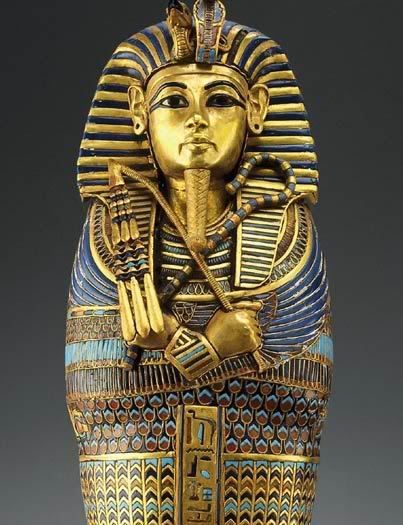In an Antique Land was a unique book for me, as its two threads focus on a small town that I grew up in for the first 20+ years of my life and a Country that I have lived in for the last 3 years. So I had a unique connect with this book.
Not so suprisingly, the description of my hometown did not ring a bell as it focussed mostly on the town as it existed 800+ years ago. The description of rural Egypt created a veritable clang in my head as I kept thinking to myself "How true" or "Yes, I know someone who would have reacted the exact same way"
This is a book of non fiction. Amitav Ghosh chanced upon a letter between Abraham Ben Yiju, a Jewish merchant living in Mangalore, India, and Khalaf ibn Ishaq from Egypt, written in 1132AD. Part of this narrative focuses on Ghosh's search for more documents relating to Ben Yiju and part of the narrative tries to imagine the world that Ben Yiju lived in.
The other narrative in the book, covers Ghosh's stay in rural Egypt (Mashawy and Lataifa) and it was this section that I found infinitely more interesting and hence hope to pick up his book of essays The Imam and the Indian which promise to shed more light on this phase of his life.
It is in this second narrative that Amitav's gift of story telling is showcased, while in the first narrative it feels stilted, focussed on facts and doesn't flow as naturally. Blending history with a a current travelogue is an art perfected by William Dalrymple and sadly in comparison, Ghosh didn't match up.
While Ben Yiju did spend time in Egypt and his letters were written to people living there and most of the surviving documentation came from the Geniza Documents cache from the Ben Ezra Synagogue in the Coptic Cairo area of modern day Cairo and Fustat of Ancient Cairo, this is the only point at which the two narratives seem to meet. For the rest of the book, they just continue parallel to each other.
In the final chapters, when Ghosh heads out towards the tomb of a Jewish Saint in rural Egypt venerated by Muslims and Jews alike, I hoped it would bring about a meeting of the parallel stories, but unfortunately it didn't.
Both narratives on their own are great and very illuminating, I just didn't see the point of putting them together.
Its a great read for someone visiting the Fustat area or interested in observations/revelations from the Geniza Cache or life in Rural Egypt.
Also Published on desicritics
Thursday, February 25, 2010
Wednesday, February 17, 2010
King Tutankhamun most likely died of Malaria
The results of a new DNA study on King Tut (Tutankhamun) reveal that he was a frail pharaoh, beset by malaria and a bone disorder—and possibly compromised by his newly discovered incestuous origins.

The findings of this study that seem the most interesting to me are.
1. The murder and posioning rumors will now have to be put to rest as Malaria seems to be the most likely cause of his death.
2. This is now the oldest known genetic proof of malaria.
3. They found more than one strain of malaria parasite, indicating that King Tut caught multiple malarial infections during his life.
4. Tutankhamun is the son of Akhenaten and his Sister Queen (a minor queen perhaps, but not his chief wife Queen Nefertiti whose beauty and bust have been subject to much debate)

6. The mummy KV55 has been positively identified as that of Akehnaten (the 'so-called' Heretic King who wanted the populace to worship only one God)
7. The speculation that Akhenaten suffered from gynecomastia - a genetic disorder that causes men to have female features like wide hips, potbelly, and breasts - has been put to rest.

If you would like to read a more detailed report, it is available on National Geographic
Tuesday, February 16, 2010
Problem with Rats?
Recently, I've heard a couple of complaints from my friends about rats entering their houses. Its not a seasonal problem, but seems to have ocurred due to construction nearby or major movement of goods in the surroundings.
My first recommendation would be to get a cat to do the job for you. I find the rat problem here in Cairo much less than most metropolitan cities and my guess is that it is the feral cat population that keeps the rat (and also cockroach) population to a minimum. In most Indian cities, the stray dog population is high and hence the feral cat population is low and the rat population is high. In cities like Bombay, I have seen rats bigger than the average cat in size and have actually seen 2 rats chasing a cat. (The cat did not even have a chance)
A friend of mine recommended this poison in case you have a rat problem. She said to ask for "sim li firan" at the pharmacy. Its a grey powder that you need to sprinkle over a piece of food/fruit that the rat may like to nibble on. If you put it on too thick, it may alert the rat to the presence of poison, so just a sprinkle. You may need to do this a couple of nights in a row, till the rat dies or stops coming back inside. She also says that this is quite a toxic product so to be very careful with how you handle it and to keep it out of the way from children and household pets. This supposedly causes internal bleeding in the rat.
There are rat traps available on some parts of the city, but I'm not sure where exactly.
My first recommendation would be to get a cat to do the job for you. I find the rat problem here in Cairo much less than most metropolitan cities and my guess is that it is the feral cat population that keeps the rat (and also cockroach) population to a minimum. In most Indian cities, the stray dog population is high and hence the feral cat population is low and the rat population is high. In cities like Bombay, I have seen rats bigger than the average cat in size and have actually seen 2 rats chasing a cat. (The cat did not even have a chance)
A friend of mine recommended this poison in case you have a rat problem. She said to ask for "sim li firan" at the pharmacy. Its a grey powder that you need to sprinkle over a piece of food/fruit that the rat may like to nibble on. If you put it on too thick, it may alert the rat to the presence of poison, so just a sprinkle. You may need to do this a couple of nights in a row, till the rat dies or stops coming back inside. She also says that this is quite a toxic product so to be very careful with how you handle it and to keep it out of the way from children and household pets. This supposedly causes internal bleeding in the rat.
There are rat traps available on some parts of the city, but I'm not sure where exactly.
Subscribe to:
Posts (Atom)

























